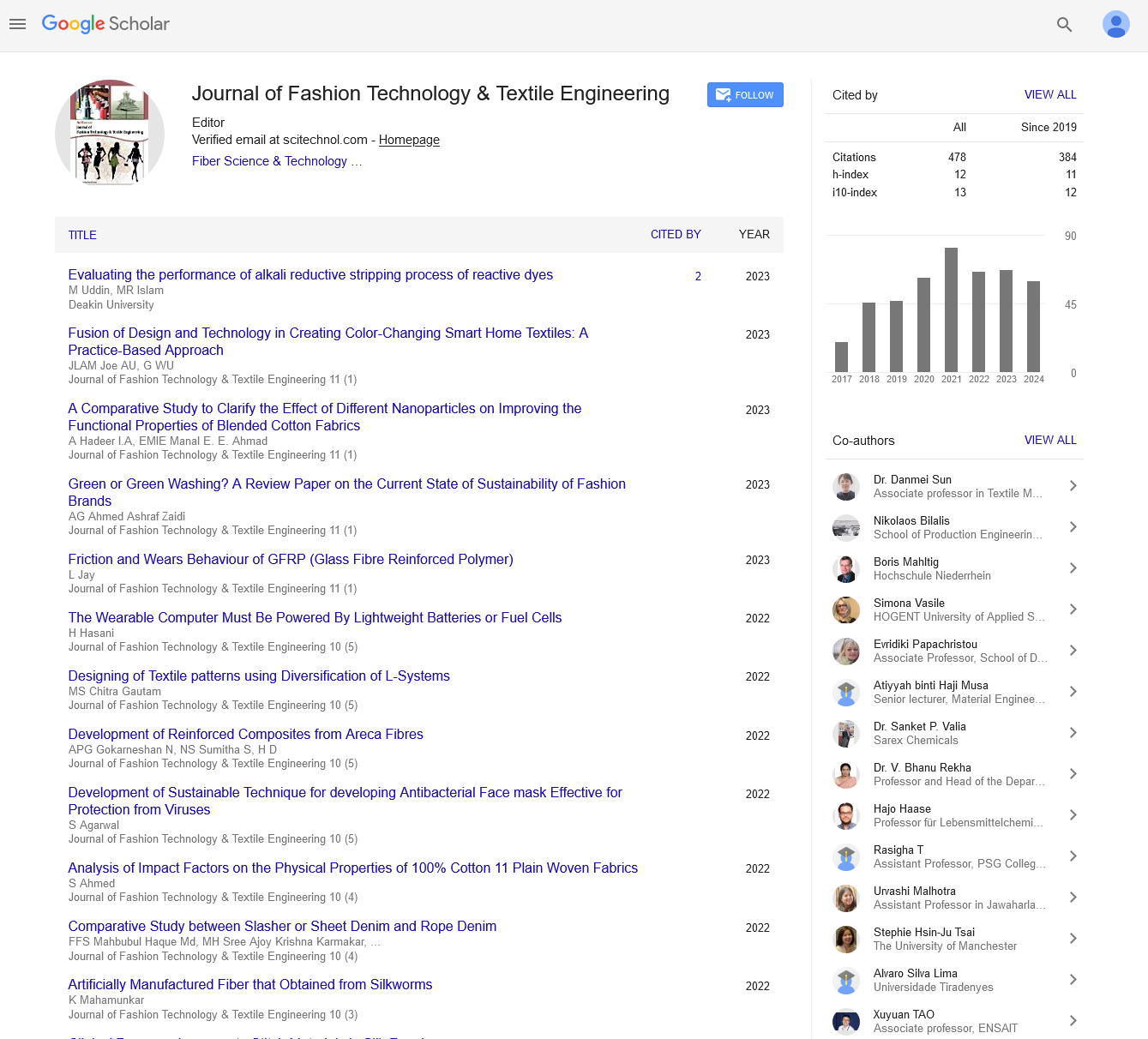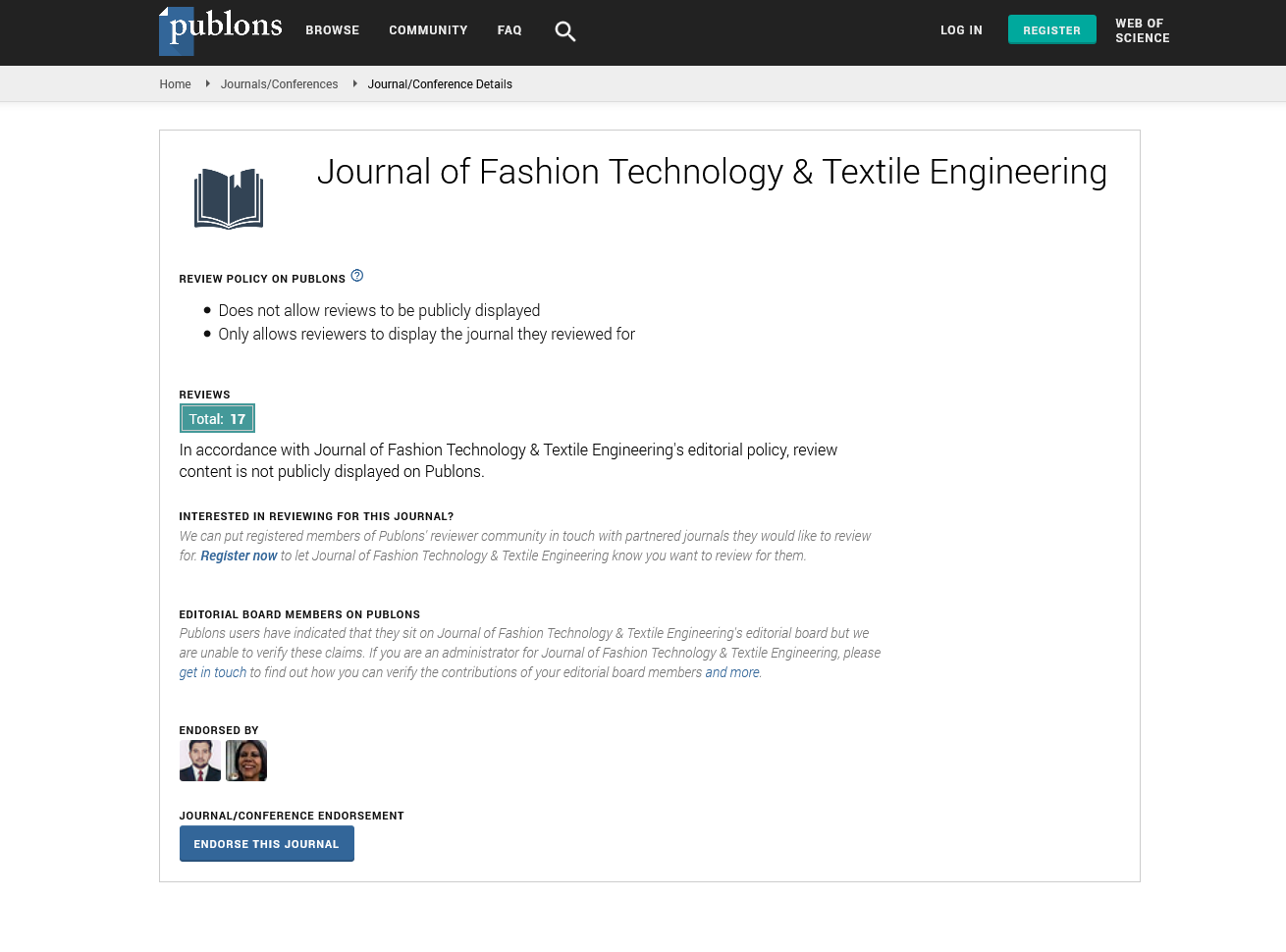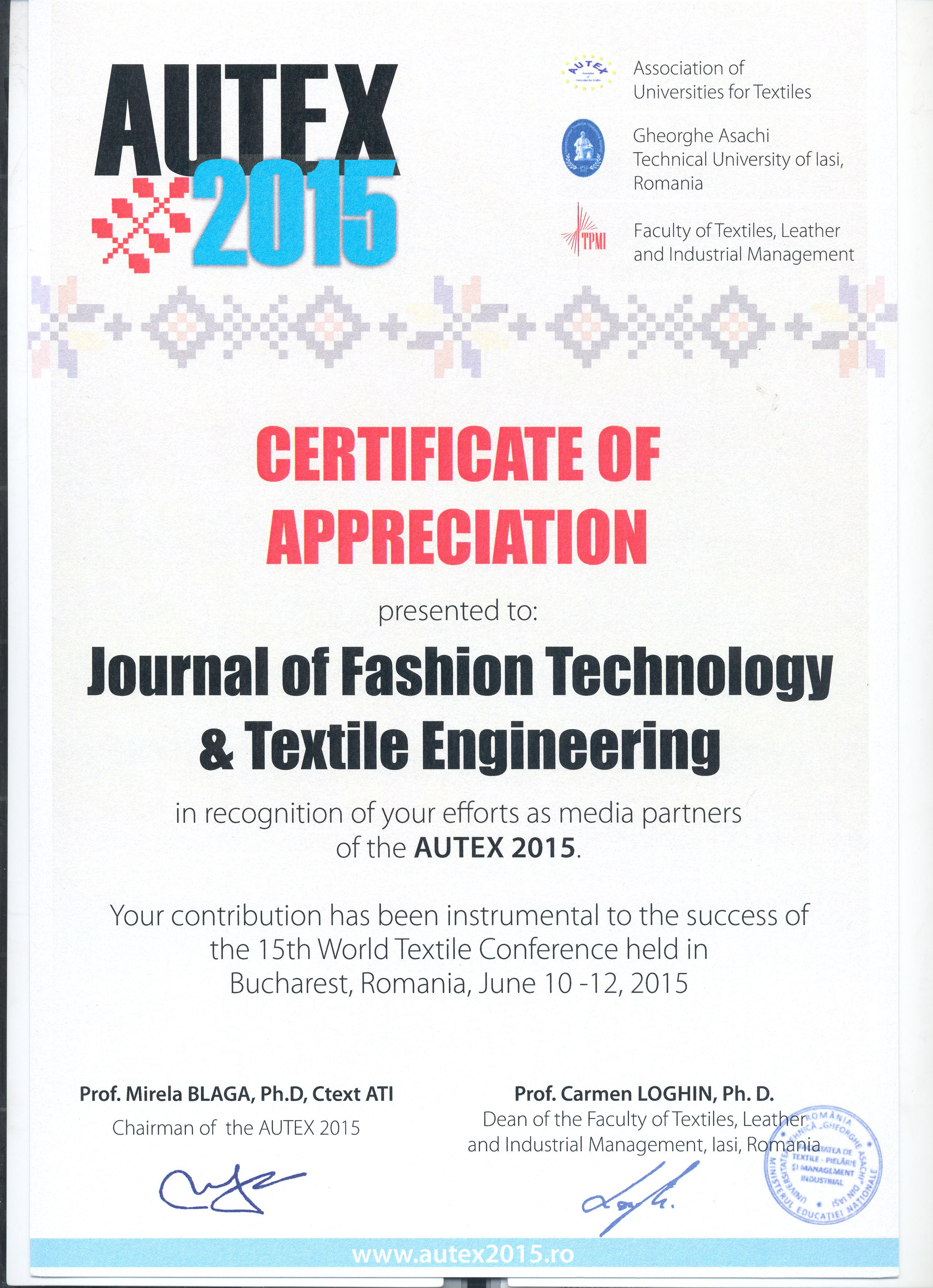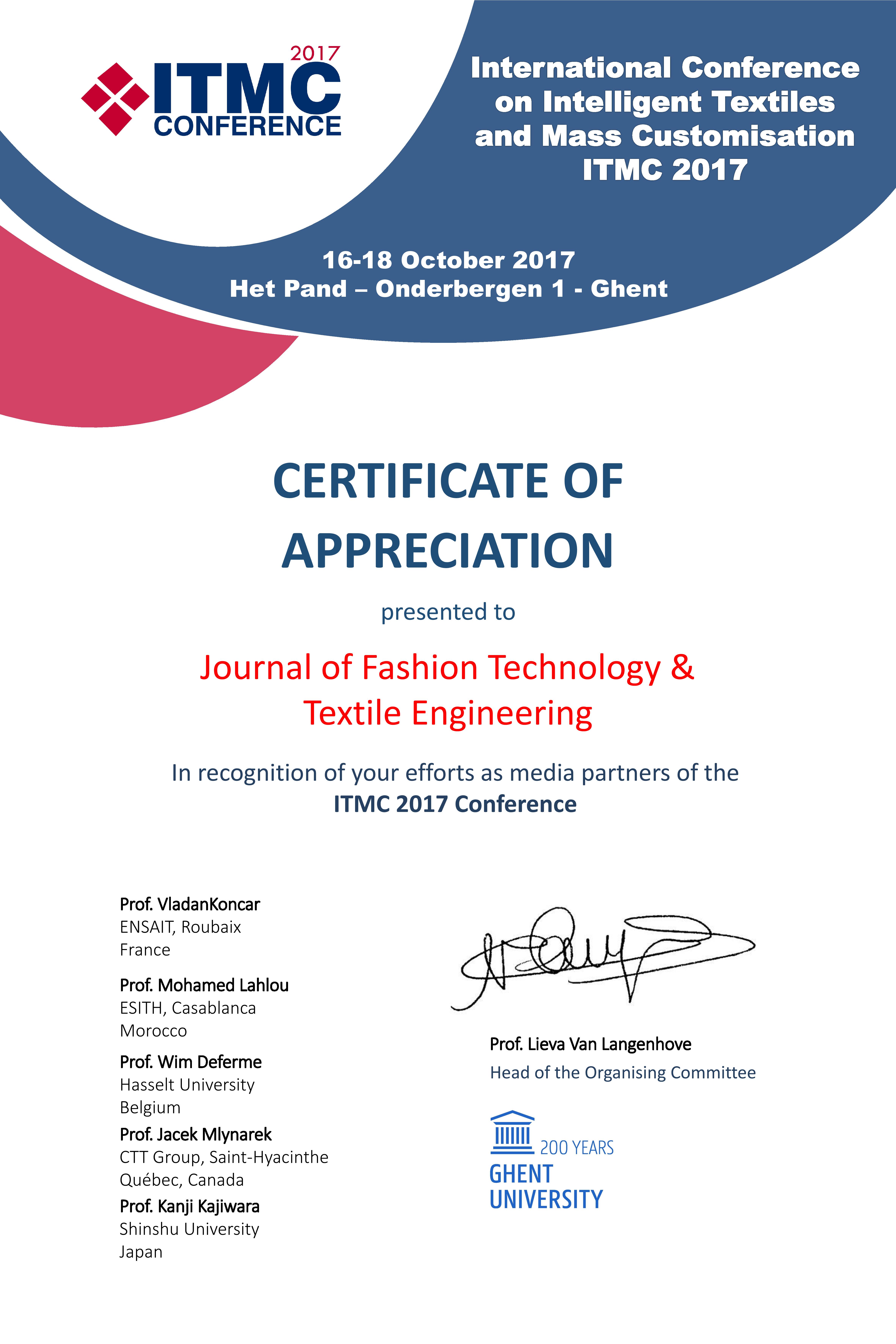Commentary, J Fashion Technol Textile Vol: 12 Issue: 5
Bioengineered Fabrics: Innovations in Sustainable Textile Production
Emma Johansson*
1Department of Fashion and Textiles, University of Boras, Boras, Sweden
*Corresponding Author: Emma Johansson,
Department of Fashion and Textiles,
University of Boras, Boras, Sweden
E-mail: emma-johansoon156@gmail.com
Received date: 23 September, 2024, Manuscript No. JFTTE-24-152099;
Editor assigned date: 25 September, 2024, PreQC No. JFTTE-24-152099 (PQ);
Reviewed date: 09 October, 2024, QC No. JFTTE-24-152099;
Revised date: 17 October, 2024, Manuscript No. JFTTE-24-152099 (R);
Published date: 25 October, 2024, DOI: 10.4172/2329-9568.1000379.
Citation: Johansson E (2024) Bioengineered Fabrics: Innovations in Sustainable Textile Production. J Fashion Technol Textile 12:5.
Description
The textile industry has long been known for its high environmental footprint from excessive water use to synthetic waste that remains in landfills. However bioengineering is emerging as a transformative approach, offering new possibilities for sustainable textile production. By using living organisms, lab-grown fibers and innovative processing techniques bioengineered fabrics exhibit potential to reshape the sector, minimizing its ecological impact. Bioengineered fabrics incorporate living cells, microorganisms or bio-based processes in their formation. Unlike traditional textiles that depend on heavily on resource-intensive practices bioengineered options focus on using natural processes. For instance, some fabrics are produced by bacteria or yeast through fermentation processes. These microorganisms generate fibers that mimic natural materials like silk, providing similar softness, flexibility and strength.
Lab-grown fibers are another area of advancement. Researchers are developing alternatives to animal-based textiles by cultivating fibers in lab environments. These lab-grown materials can reproduce the structure and feel of materials such as leather or wool without the need for farming animals. As a result, they reduce the demand for resources and improve the ethical issues associated with animal-based materials. Several innovations in bioengineered textiles platform how these fabrics could become part of mainstream fashion and industrial applications. Mycelium leather, produced from mushroom roots, offers a plant-based substitute for traditional leather. It’s durable, versatile and requires significantly fewer resources to produce. Unlike animal leather which often involves chemicals for tanning and finishing mycelium leather can be processed with eco-friendly methods.
Another example is lab-grown spider silk, which uses the protein structure of spider silk to produce ultra-strong fibers without depend on the spider itself. This material provides strength that tough yet remains light and flexible making it an attractive option for applications beyond clothing, such as protective gear. Seaweed-based fabrics are also gaining traction. Algae-derived fibers can produce soft, biodegradable textiles suitable for active wear and casual clothing. Algae can grow rapidly with minimal resources, making it a sustainable raw material choice. Additionally, fabrics produced from algae have natural antimicrobial properties, reducing the need for chemical treatments.
The bioengineering of textiles can reduce the need for environmentally damaging processes associated with traditional textile production. Water consumption and chemical pollution are among the primary issues facing the industry today. By using microorganisms and lab-grown fibers bioengineered textiles can reduce support on water-intensive processes and minimize chemical usage. Waste reduction is another benefit, as many bioengineered textiles are designed to be biodegradable or recyclable. When disposed of properly these fabrics break down more efficiently than synthetics like polyester. As a result, they can help the long-standing problem of textile waste that accumulates in landfills and releases microplastics into waterways. From an economic perspective, bioengineered textiles are increasingly viable as new methods make production more efficient.
Although currently more expensive than conventional options, prices are expected to decrease as technology improves and adoption grows. This could make sustainable textiles accessible for a wider range of consumers, allowing eco-friendly choices to reach a larger market. As technology advances, the potential applications for bioengineered textiles continue to expand. Research analyzes the integration of responsive features into fabrics, such as materials that can adapt to temperature changes or adjust moisture levels. These functional textiles could be valuable not only in fashion but also in fields like healthcare and sports.
Conclusion
In conclusion, bioengineered fabrics are leading the way toward a future where textiles are eco-friendlier and less resource-intensive. The innovations within this field demonstrate the potential for positive environmental change through scientific exploration and innovative approaches. With further advancements in production techniques and material science, bioengineered textiles may perform a significant role in reshaping the fabric of the fashion industry toward more sustainable practices. Collaboration across industries, from biotechnology to fashion design bioengineered fabrics represent a significant advancement. With further research, these fabrics could replace traditional textiles in various sectors, creating a more sustainable approach to manufacturing. As awareness grows about the environmental effects of traditional textile production, bioengineered options are likely to see increased demand.
 Spanish
Spanish  Chinese
Chinese  Russian
Russian  German
German  French
French  Japanese
Japanese  Portuguese
Portuguese  Hindi
Hindi 


